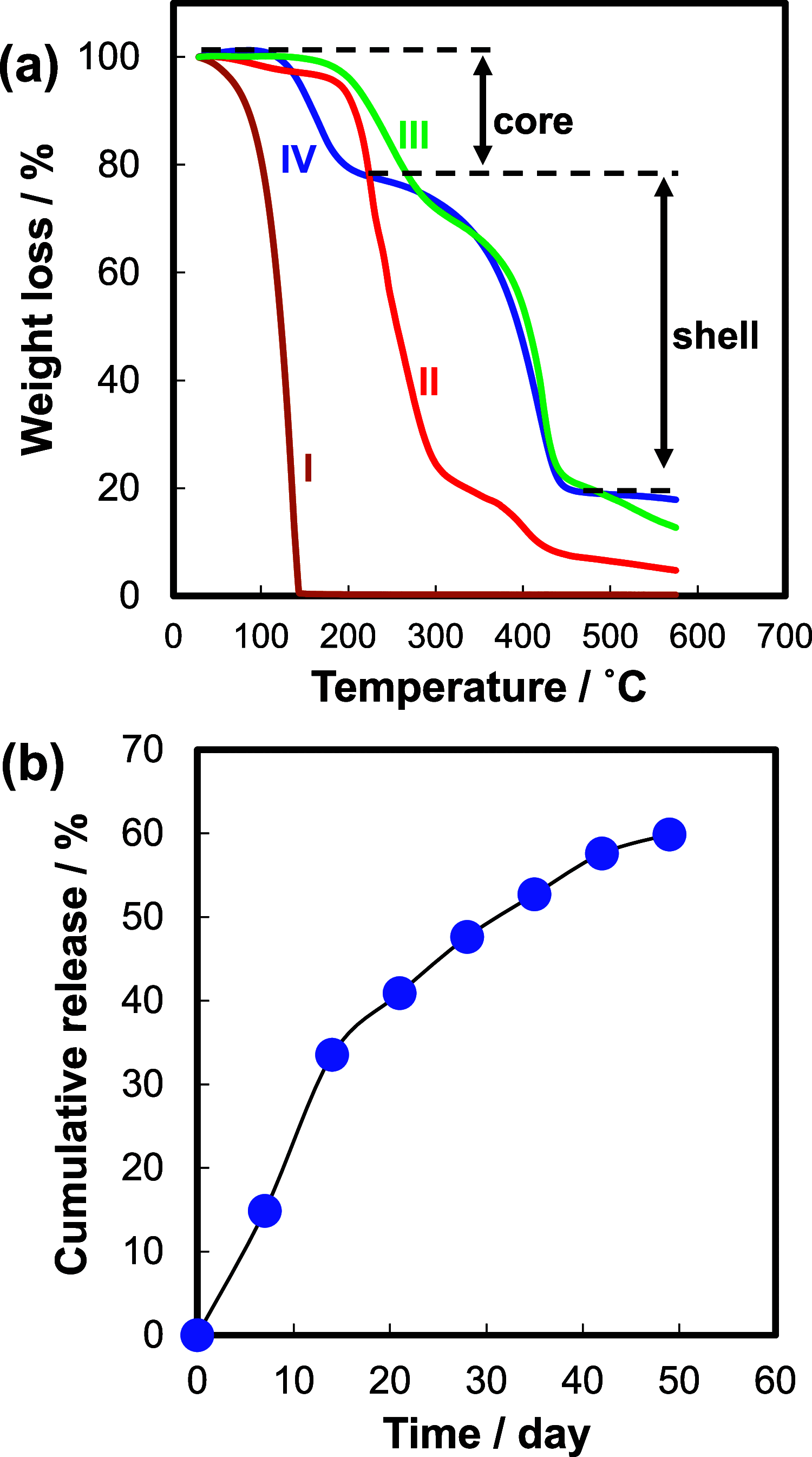Multifunctional Biopolymer Nanocapsules for Antimicrobial, Fragrance-Releasing, and UV-Activated Coatings
- PMID: 40727800
- PMCID: PMC12290645
- DOI: 10.1021/acsomega.5c03118
Multifunctional Biopolymer Nanocapsules for Antimicrobial, Fragrance-Releasing, and UV-Activated Coatings
Abstract
Multifunctional biopolymer nanocapsule coatings with antimicrobial, fragrance-releasing, and UV-activated properties were developed using poly-(eugenol methacrylate) (PEuMA) synthesized via miniemulsion polymerization. Linalool, a model essential oil, was encapsulated within the nanocapsules, while a polymerizable surfactant, P-(QAC12-BP)-I, was incorporated to introduce both antimicrobial quaternary ammonium (QAC12) groups and UV-reactive benzophenone (BP) moieties. The resulting spherical nanocapsules (∼400 nm) exhibited high colloidal stability (+80 mV) and achieved 70% monomer conversion within 8 h. Upon UV irradiation, the BP groups enabled covalent cross-linking between nanocapsules and cotton fabrics, significantly enhancing coating durability. The coated fabrics showed 100% bacterial reduction against and and retained 72% of the coating after 10 washing cycles. Linalool was gradually released over 7 weeks, achieving 60% cumulative release, ensuring prolonged aroma delivery. These UV-cross-linkable PEuMA nanocapsules present a robust and sustainable platform for durable antimicrobial and functional surface coatings.
© 2025 The Authors. Published by American Chemical Society.
Figures









Similar articles
-
Poly(ε-caprolactone) nanocapsules coated with Chitosan optimize the antimicrobial activity of Tea Tree Oil and Azithromycin against oral pathogens.Microb Pathog. 2025 Sep;206:107820. doi: 10.1016/j.micpath.2025.107820. Epub 2025 Jun 19. Microb Pathog. 2025. PMID: 40543634
-
Synergistic Antifungal Efficacy of Eugenol-Loaded Nanocapsules Combined With Itraconazole Against Trichophyton mentagrophytes.Vet Med Sci. 2025 May;11(3):e70352. doi: 10.1002/vms3.70352. Vet Med Sci. 2025. PMID: 40322853 Free PMC article.
-
Multifunctional magnetic nanocapsules for dual delivery of siRNA and chemotherapy to MCF-7 cells (Breast cancer cells).Naunyn Schmiedebergs Arch Pharmacol. 2025 Jun 27. doi: 10.1007/s00210-025-04381-8. Online ahead of print. Naunyn Schmiedebergs Arch Pharmacol. 2025. PMID: 40576767
-
Types of indwelling urethral catheters for short-term catheterisation in hospitalised adults.Cochrane Database Syst Rev. 2014 Sep 23;2014(9):CD004013. doi: 10.1002/14651858.CD004013.pub4. Cochrane Database Syst Rev. 2014. PMID: 25248140 Free PMC article.
-
Effect of longer-term modest salt reduction on blood pressure.Cochrane Database Syst Rev. 2013 Apr 30;2013(4):CD004937. doi: 10.1002/14651858.CD004937.pub2. Cochrane Database Syst Rev. 2013. PMID: 23633321 Free PMC article.
References
LinkOut - more resources
Full Text Sources
